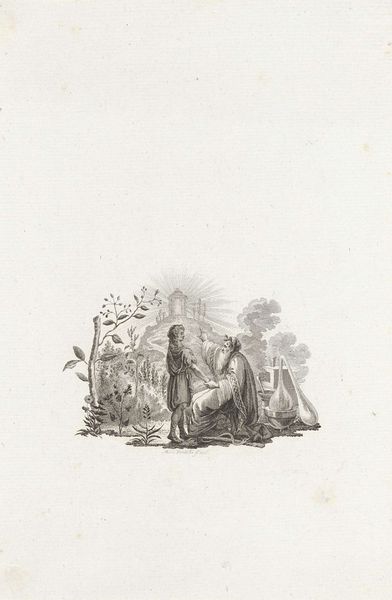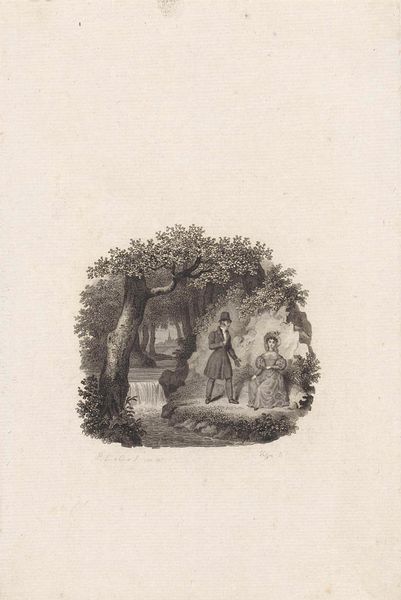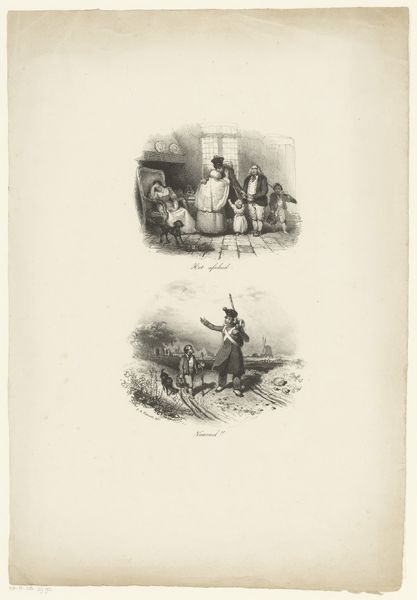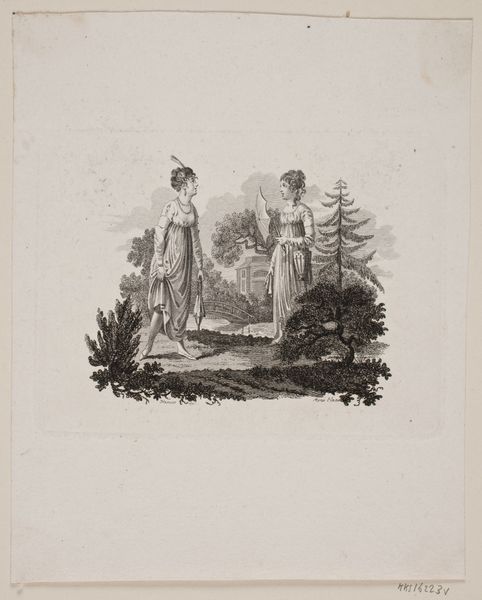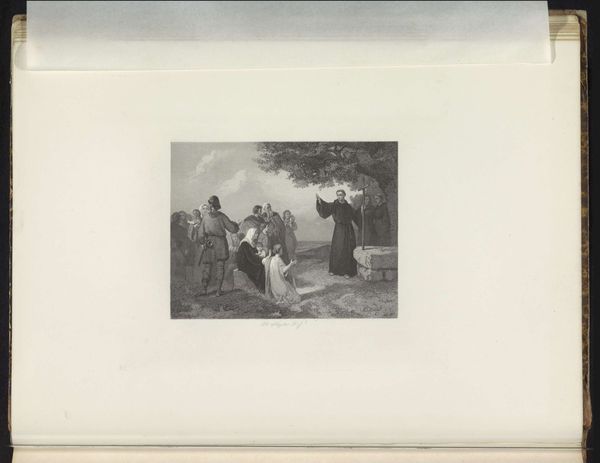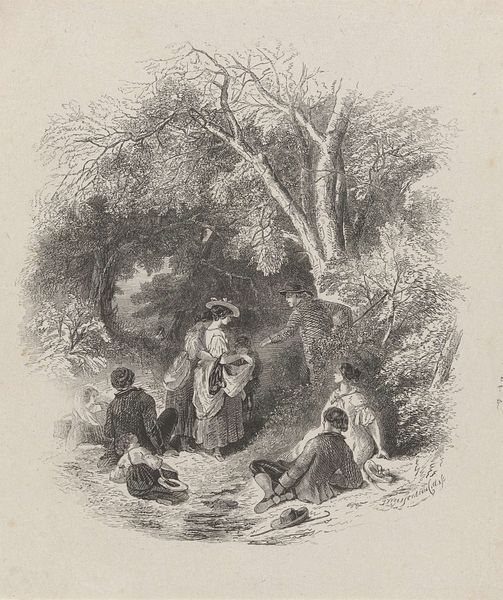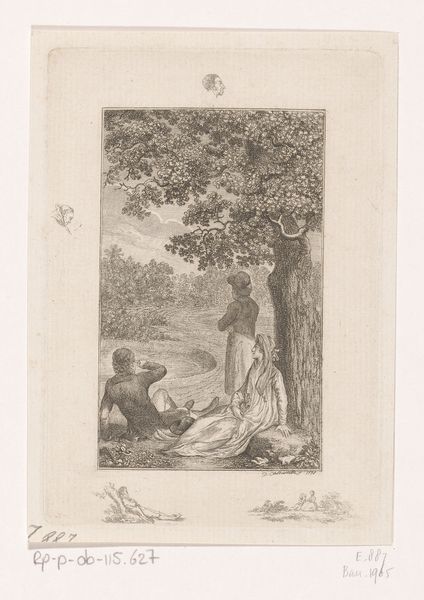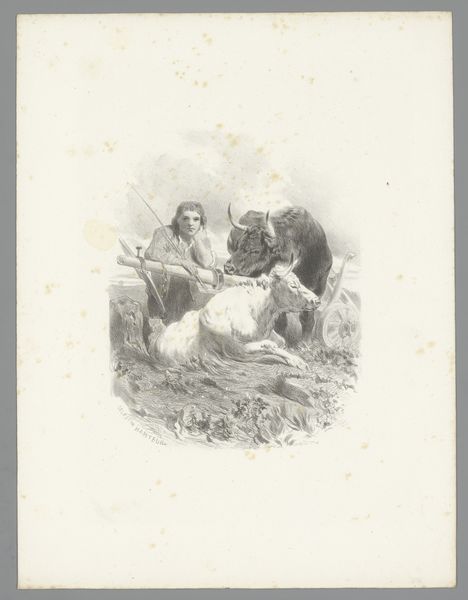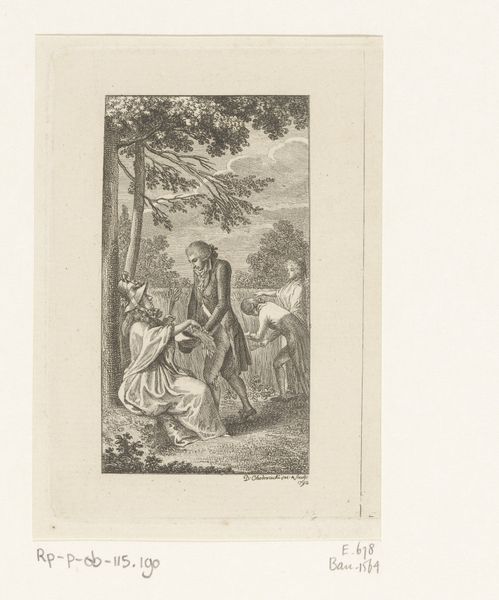
print, engraving
# print
#
landscape
#
figuration
#
genre-painting
#
engraving
Dimensions: height 189 mm, width 137 mm
Copyright: Rijks Museum: Open Domain
Willem Frederik Wehmeyer created this print titled 'Wasvrouw bij een brug'—or 'Washerwoman by a bridge'—using etching. This genre scene shows a woman, presumably a washerwoman, at work by a bridge, while a mother and child look on. It likely reflects the social realities of 19th-century Holland. We see the ordinary labor of working-class women represented. Wehmeyer depicts the hierarchies of labor and leisure, while reminding us of the physical demands of everyday life for women. The bridge itself suggests connections and divisions within the community, a physical and symbolic link between different social spheres, while reminding the viewer of those who are excluded from the space of the home. To understand this print better, we can turn to historical archives and studies of 19th-century Dutch society, looking at the representation of labor and the role of women in art. In doing so, we can appreciate how this image both reflects and shapes our understanding of the past.
Comments
No comments
Be the first to comment and join the conversation on the ultimate creative platform.
